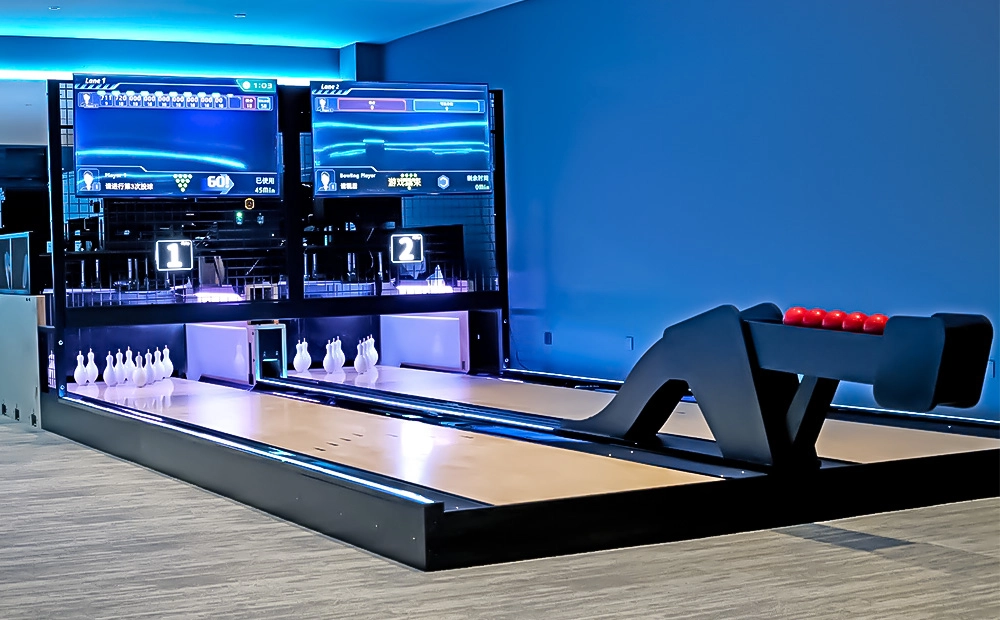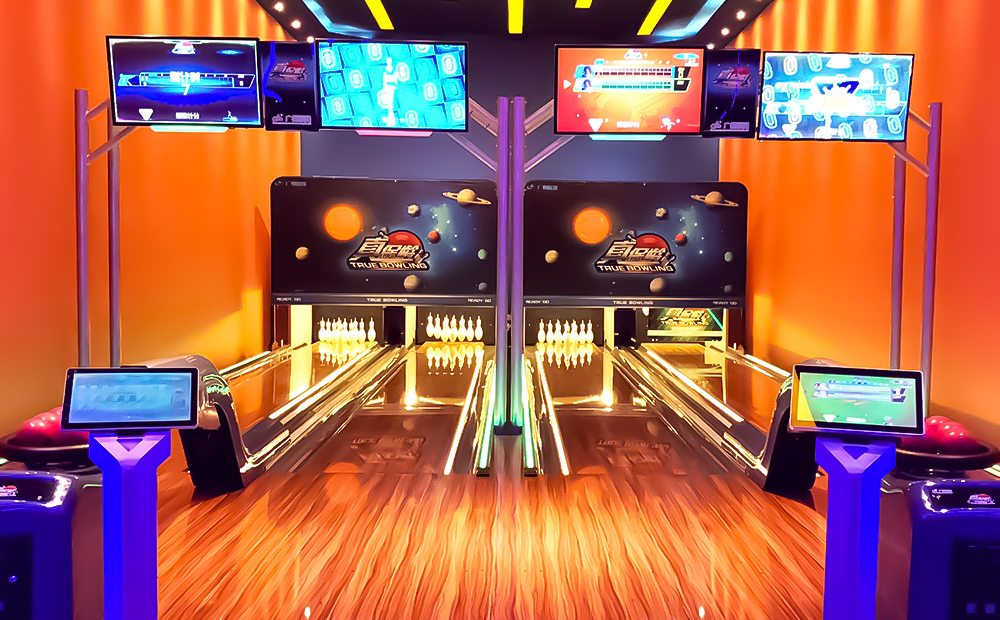The Length of a Bowling Lane: Everything You Need to Know
Article:
Heading 1: Introduction to Bowling Lane Length
In this section, provide a brief overview of the significance of the length of a bowling lane and how it impacts the game. Explain the basic concept of bowling lane dimensions and their influence on players' strategies.
Heading 2: Understanding Standard Bowling Lane Length
Detail the standard dimensions for a bowling lane, including the length, width, and variations in lane sizes. Discuss the international standards for bowling lane length and why they are important for competitive and recreational bowlers alike.
Heading 3: Impact of Lane Length on Bowling Techniques
Explore how the length of a bowling lane affects players' approaches, angles, and release techniques. Discuss the differences in strategies required for shorter and longer lanes and provide expert tips for adapting to various lane lengths.
Heading 4: Bowling Lane Length and Scoring
Examine the relationship between lane length and scoring in bowling. Discuss how the distance impacts the speed of the ball, the hook potential, and pin carry, and how these factors affect the overall scoring of a game.
Heading 5: Technology and Bowling Lane Length
Describe how advancements in technology have influenced the construction and maintenance of bowling lanes, and how innovative solutions have optimized the playing experience for bowlers of all skill levels. Highlight any technological innovations in lane length that have revolutionized the game.
Heading 6: The Future of Bowling Lane Length
Provide insights into potential developments and trends in bowling lane technology, and how changes in lane length are expected to impact the sport in the near future. Discuss any ongoing research or experimental approaches to enhancing the playing surface for bowlers.
Heading 7: Challenges and Solutions in Bowling Lane Length
Discuss common challenges associated with maintaining bowling lanes at the required length and explore the solutions and best practices implemented by industry leaders to ensure optimal playing conditions.
Heading 8: Conclusion
Summarize the key takeaways from the article and emphasize the importance of understanding the impact of bowling lane length on the game. Encourage readers to apply the insights gained to improve their performance and enjoyment of the sport.
FAQs:
1. How does the length of a bowling lane affect my game?
- The length of a bowling lane can significantly impact your game, influencing your approach, angle, and release techniques.
2. Are there different standards for bowling lane lengths?
- Yes, there are international standards for bowling lane length, with variations in dimensions for different types of bowling alleys.
3. Can technology improve the experience of playing on bowling lanes of different lengths?
- Yes, advancements in technology have led to improvements in lane construction and maintenance, enhancing the playing experience for bowlers.
4. What challenges are associated with maintaining the required length of bowling lanes?
- Challenges such as wear and tear, environmental factors, and regular maintenance are common issues that can affect the length of bowling lanes.
5. How can I adapt to bowling on lanes of different lengths?
- Adapting to different lane lengths requires practice and understanding the nuances of each surface. Consulting with experienced bowlers and coaches can also provide valuable insights.
Concluding Paragraph:
In conclusion, the length of a bowling lane plays a crucial role in the sport of bowling, impacting players' techniques, strategies, and overall experience. By understanding the significance of lane length and adapting accordingly, bowlers can optimize their performance and fully enjoy the game. Stay tuned for more tips and information on bowling lane length and other aspects of the sport from Flying Bowling.
Company Profile:
Flying Bowling has focused on the research and development of string pin bowling, which became a big hit among operators with the launch of the market. With the global digital movement, Flying Technology, in line with the aim of technological innovation, quality first, and service first, has been chosen by a number of domestic and foreign digital sport franchises as their designated only supplier.
Recommended products

Flying Smart Duckpin Bowling

Flying Ultra Standard Bowling String Pinsetter

Indoor Medium Duckpin Bowling Lane Equipment For Bowling Alley

Complete Set Of String Pinsetter Bowling Lane Equipment

Brand New String Pinsetter Mini Bowling Equipment Small Ball And Pin
Price
Cost to setup a 8 lane bowling business?
This includes bowling lanes, bowling balls, pins, scoring systems, ball return systems, shoes, and other necessary equipment. Purchasing or leasing high-quality equipment is essential for a successful operation.
The total cost can vary greatly depending on factors such as location, size, quality, and additional amenities (such as a restaurant or arcade). On average, setting up an 8-lane bowling business can cost anywhere from several hundred thousand to over a million dollars. It's essential to conduct thorough research and create a detailed business plan to accurately estimate the specific costs of your venture.
Consulting with Flying Bowling experts can provide valuable insights into potential expenses.
Is it profitable to open a bowling alley?
Opening a bowling alley can be profitable, but there's no guarantee of success. It depends on several factors:
Market Demand: Is there a local interest in bowling? Consider the demographics of your area. Does it have a large enough population to support your business? Bowling alleys tend to do well in areas with disposable income for entertainment.
Competition: How many other bowling alleys are there nearby? What kind of experience do they offer? You'll need to find a way to stand out from the competition.
Concept: What kind of bowling experience are you creating? A traditional bowling alley with many lanes focuses on lane rentals. A boutique alley might have fewer lanes but offer high-end food and drinks. A family entertainment center might have mini bowling alongside other attractions.
Location: This is crucial. High-traffic areas with good visibility are ideal. Consider the cost of rent or property purchase in your chosen location.
Management: Running a successful bowling alley requires good business acumen. You'll need to manage staff, inventory, marketing, and maintenance costs effectively.
Here are some things that can improve profitability:
Diversified Revenue Streams: Don't rely solely on lane rentals. Offer food and drinks, host parties and events, or consider adding other entertainment options like arcade games.
Modern Amenities: Invest in comfortable seating, high-quality equipment, and a clean environment. Consider technological upgrades to scoring systems or interactive features.
Customer Service: Friendly and efficient staff can keep customers coming back. Offer specials and promotions to attract new customers and reward loyalty.
Overall, opening a bowling alley requires careful planning, research, and a solid business plan. While there can be good profits to be made, it's not a low-risk venture.
Bowling Equipment
Who makes new bowling equipment?
Flying specializes in manufacturing brand new bowling equipment. All the equipment, fairway boards, balls, and pins we provide are brand new. Including the scoring and management systems of our bowling lanes, they are all unique and developed by ourselves.
What are the equipment and parts used in bowling?
It is mainly divided into equipment and fairway board parts. The equipment part mainly includes a ball-return machine, ball-up machine, lane computer, string pinsetter machine, etc. The fairway board part includes the gutter, fairway board, etc. The most important sections are the lane management system and the lane scoring system. Please feel free to contact us for a detailed equipment configuration list.
Product
How many lanes does it take to open a bowling alley?
There's no strict rule on the number of lanes required to open a bowling alley. It depends on your business goals and target market.
Here's a breakdown to help you decide:
- Small niche alleys: Some bowling alleys might focus on a specific audience, like a boutique bowling alley with just a few lanes catering to a high-end clientele. They might have other revenue streams besides just bowling, like a fancy restaurant or bar.
- Traditional bowling alleys: These typically have many lanes, often around 8 to 24 lanes , to accommodate a larger number of bowlers and maximize revenue through lane rentals.
- Mini bowling: Certain alleys might offer mini bowling, which uses lighter balls and shorter lanes. This could be a good option for a family entertainment center and wouldn't require a large number of standard lanes.
Ultimately, the number of lanes is a business decision based on your target market, budget, and the overall experience you want to create.
You may also like

Flying Smart Duckpin Bowling (FSDB) innovative design, standard 9.2-meter short lane, can be shortened in length, compact layout suitable for small spaces. The game rules are simple but challenging, attracting players of different ages to actively participate.
Suitable for social entertainment venues such as bars, billiard halls, and game centers, it not only enhances interactivity but also increases the popularity and consumption frequency of the venue. The fun and competitive nature of FSDB will make it a new focus of social activities.

Flying Classic Standard Bowling (FCSB) is designed according to international competition standards and equipped with an accurate automatic scoring system, providing bowling enthusiasts with a pure professional experience. Whether it is for competitions or leisure entertainment, FCSB can meet high-level needs.
Suitable for family entertainment centers, luxury resorts, private villas, or clubs, it is an ideal choice for customers who pursue high-end quality and professional experience. Its classic design and excellent performance will add lasting appeal to the venue.

Flying Cute Mini Bowling (FCMB) is a mini bowling experience designed for children and families. The lane length is fixed at 12 meters, equipped with lightweight balls without finger holes (only 1.25kg) and small pins, specially designed for children and family fun.
It can not only help children feel the fun of bowling, but also stimulate their interest and competitive consciousness. Suitable for children's playgrounds, theme parks and parent-child centers, it is the best choice for places focusing on the children's market.

Flying Social Medium Bowling (FSMB) is tailored for small venues, with flexible lane lengths (customizable from 9.6 meters to 18 meters), a small ball design suitable for players of all ages, and light pins that are easier to knock down, increasing participation and fun.
Whether it is a gathering of friends or a casual social, FSMB can easily create a relaxed and pleasant atmosphere. Its efficient space-utilization design is particularly suitable for cafes, bars and community entertainment venues, allowing people to fall in love with bowling in a relaxed interaction.
Contact Flying
Start your bowling alley project
If you contact us now for more details, we can provide you with a custom bowling alley service. Our service team will get back to you within 24 hours normally!
© 2025 Flying BOWLING. Designed by gooeyun.
FOLLOW US:




Flying Bowling
Flying Bowling
Flyingbowling
Flyingbowling